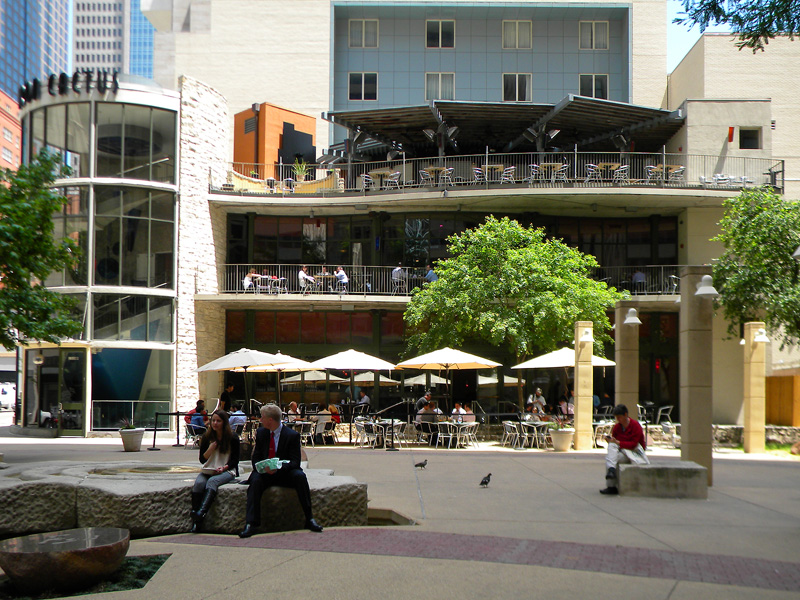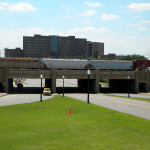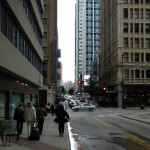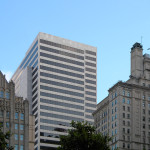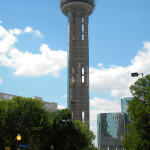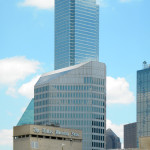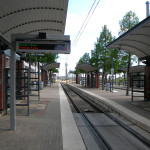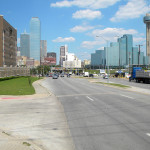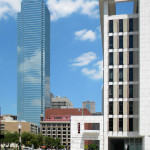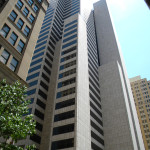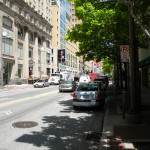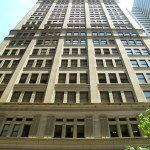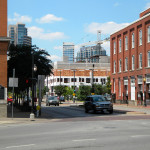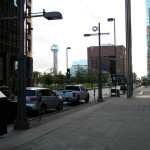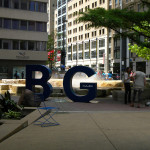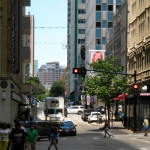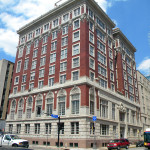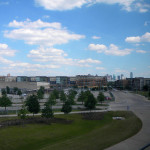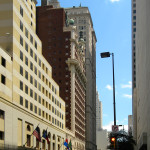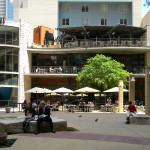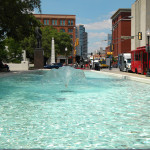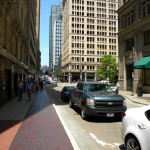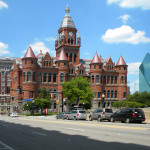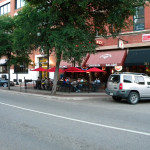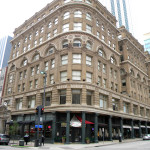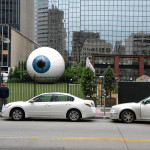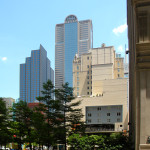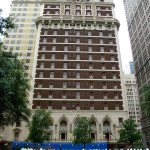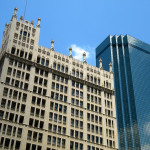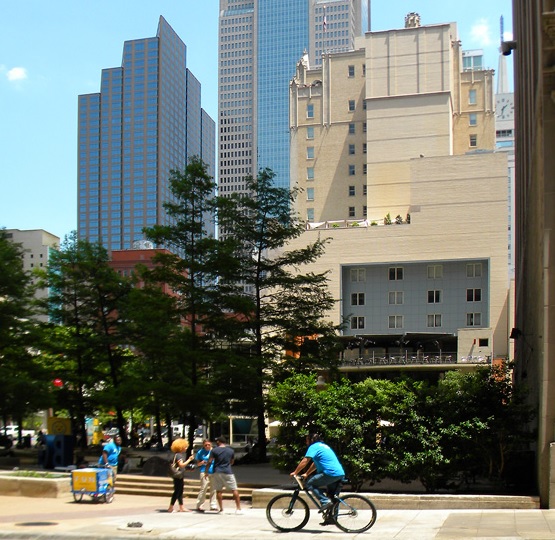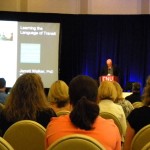I saw my first cowboy hat within my first five steps off of my Frontier Airlines flight into Dallas/Fort Worth International Airport.
The truth is, I didn’t really know what to expect from Dallas – hell, I’d never even been to Texas. What I found during last week’s visit was a clean, cosmopolitan city filled with music, art, and a personable populace that exceeded my expectations.
Things didn’t get off to the best start. I had to spend a couple of hours at the airport waiting for my girlfriend’s flight to arrive. Leaving Terminal E for the train at Terminal A, the Terminal Link bus felt, indeed, terminal, as it would its way through an unintelligible maze of ramps and roadways.
We then faced another hour on Dallas Area Rapid Transit‘s (DART) Orange Line to our accommodations, the historic Hotel Lawrence in the West End of Dallas. I would not recommend this hotel unless you’re looking for something cheap and you’re not planning on being there much, because it’s currently under a heavy renovation to rebrand it as a LaQuinta Inn & Suites and won’t be completed until early next year. But it is served by several bus lines, is across the street from Dallas Union Station, and is a short walk from Dealey Plaza and the Sixth Floor Museum, which is located in the building from which President Kennedy was shot. Oh, and the 561-foot Reunion Tower (1978), where for $16 you can access the GeO-Deck. (I declined.)
(Tip: Buy a 7-day DART pass for $25 and enjoy unlimited rides on all trains and buses!)
I was in town for CNU23, which was being held downtown at the beautiful Hotel Adolphus (1912) on Commerce Street. The first two days were spent getting to know writers from other Streetsblog affiliate sites and brainstorming ways to build better stories, better sites, and a better national network. We also traveled to the adjacent Deep Ellum neighborhood, which, with its restaurants and bars, would be considered the city’s hipster enclave. While there, we heard a presentation on tactical urbanism and took part in a project to build seating out of reclaimed wood pallets for a street festival.
The rest of the conference – which was extremely well-run, by the way – was focused heavily on transportation and designing around transit. Called “Meeting the Demand For Walkable Places”, the conference featured speakers presenting on topics ranging from in-depth to broad, tours of place making initiatives that are working, and meet-ups.
I will say that the architecture in Dallas left me a bit wanting. Many of the downtown buildings are constructed in the modern/brutalist and postmodern styles, indicative of the postwar boom that saw the city grow from a population of under 300,000 in 1940 to an estimated 1.3 million today. But there are pockets of “old” Dallas here and there, and numerous public plazas from which to enjoy them.
(Note: Yes, there is a McDonald’s with a drive-thru in downtown Dallas!)
On the way back to the airport on Friday, I was able to get a good look at some transit-oriented development near the Orange Line’s Victory station (near the American Airlines Center) and the massive planned community of Las Colinas in neighboring Irving.
The airport was no better the next day.
I would definitely recommend Dallas. The people were fantastic, the food was great, and the positive vibe was palpable. It may have just been the great minds that were in town for the conference, but, if it’s even half as nice on a daily basis, I’d still enjoy it. And the “CVB” weather made it all the more enjoyable.
CNU24 will take place June 8-11, 2016 in Detroit. I’ve been to Detroit several times, but not for a few years. Perhaps it will be time to visit again.
